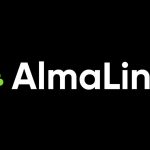The HTTP Error 503 Service Unavailable is a common issue that web users encounter, indicating that the server hosting a website is temporarily unable to handle the request. This error can be frustrating, but with a systematic approach, you can troubleshoot and resolve the issue. In this blog post, we’ll explore the potential causes of the HTTP Error 503 and provide step-by-step solutions to get your website back up and running smoothly.

Table of Contents
What Is an HTTP Error 503?
An HTTP Error 503, specifically the “Service Unavailable” error, is a status code that the server returns to the client (usually a web browser) to indicate that the requested service or resource is temporarily unavailable. This status code is part of the HTTP (Hypertext Transfer Protocol) standard, and it communicates issues on the server side rather than with the client’s request.
Common scenarios that can lead to an HTTP Error 503
- Server Overload or Maintenance: The server might be overwhelmed with too many requests or undergoing maintenance. In such cases, the server might intentionally return a 503 status to indicate that it cannot handle additional requests at the moment.
- Application Pool or Process Failure: For web applications hosted on platforms like IIS (Internet Information Services), the application pool or specific processes associated with the application might have encountered an issue or failure.
- Database Connection Issues: If your website relies on a database, a temporary inability to connect to or query the database server can lead to a 503 error.
- Configuration Errors: Misconfigurations in the web server settings or recent changes to the server configuration files can cause service unavailability.
- Resource Exhaustion: The server might be running out of critical resources such as CPU, memory, or disk space, causing it to be unable to fulfill requests.
- Firewall or Security Settings: Security configurations or firewalls may be blocking legitimate requests to the server, resulting in a service unavailable response.

Fix the HTTP Error 503 Service Unavailable
As the cause of the 503 error is often uncertain in various situations, a systematic troubleshooting approach is necessary to identify and address the issue. Here are some points to fix the HTTP error 503 service unavailable

- Check Server Status: Before diving into specific troubleshooting steps, ensure that the server hosting your website is operational. Verify server logs and any monitoring tools you have in place to identify any underlying issues with server health.
- Review Configuration Files: Check the configuration files of your web server (e.g., Apache, Nginx, IIS) for any syntax errors or misconfigurations. Pay close attention to recent changes, as they may be the culprit behind the 503 service unavailable error.
- Server Overload: A common reason for a service to become unavailable is server overload. Evaluate server resource usage, including CPU, memory, and disk space. Consider optimizing your website’s code, implementing caching, or upgrading your hosting plan to handle increased traffic.
- Database Connection Issues: If your website relies on a database, ensure that the database server is running and accessible. Check database connection settings in your web server’s configuration files to guarantee they are accurate.
- Application Pool or Process Failure: For websites hosted on platforms like IIS, check the application pool or processes associated with your website. Restarting the application pool or relevant processes can often resolve temporary glitches.
- Review Recent Updates: Evaluate any recent updates to your website’s code, plugins, or third-party services. Sometimes, conflicts between updated components can lead to the HTTP 503 service unavailable error. Roll back changes or seek updates that address compatibility issues.
- Firewall and Security Settings: Examine your firewall and security settings to ensure they are not blocking legitimate traffic to your server. Whitelist necessary IP addresses and adjust security configurations as needed.
- Temporary Maintenance Page: If you’re performing maintenance on your website, ensure that you haven’t inadvertently left it in maintenance mode. Disable maintenance mode and check if the 503 error persists.
- Content Delivery Network (CDN) Configuration: If you use a CDN, review its configuration settings. Improper CDN configurations can result in the HTTP 503 service unavailable error. Ensure that the CDN is properly integrated with your website.
- Contact Hosting Provider Support: If all else fails, reach out to your hosting provider’s support team. They can provide insights into server-related issues and may be able to resolve the problem from their end.
Conclusion
Resolving the HTTP Error 503 Service Unavailable requires a systematic approach, considering various aspects of your website’s infrastructure. By following the steps outlined in this guide, you can identify and address the root cause of the issue, restoring your website’s functionality and providing a seamless experience for your users.



